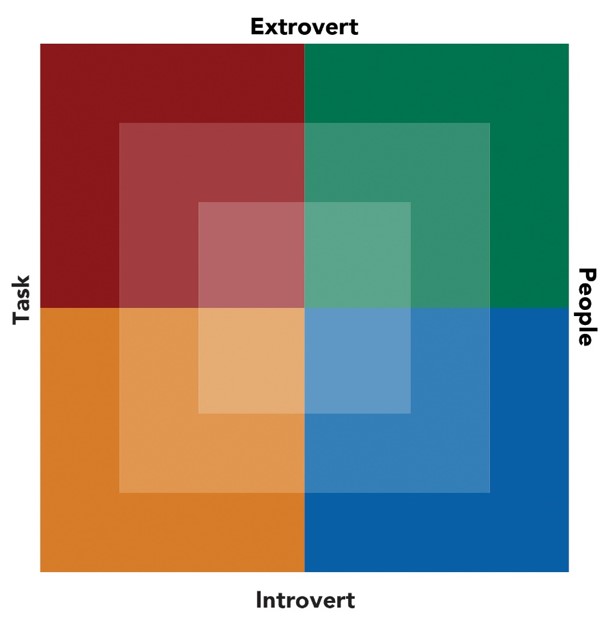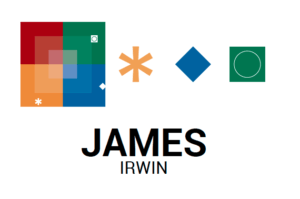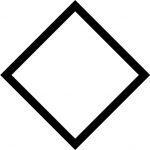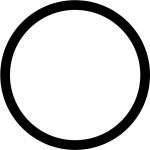Editor’s Note: The below article is from the Being Plaid Blog, adapted slightly for use to describe our use of the Birkman Method® assessment during our Executives Academy.
During the Executives Academy, all attendees completed one of our favorite tools for building teamwork and self-awareness is the Birkman Method® assessment. We talk about the Birkman a lot, but you don’t have to be a certified Birkman consultant to follow along. We’ve broken it down for you in the sections below so you can see what it is, how we use it, and why you might want to use it, too!
What is the Birkman?
The Birkman Method® is a personal assessment that measures your perception of the world and how it affects your motivations and behaviors. (Basically, Birkman believes that how you view the world determines what you need and how you behave.) Personal assessments are a common tool for anything from team building, to student development, to hiring and selection, but we love the Birkman, in particular, because it focuses on how you expect the world to treat you and how you behave when it doesn’t treat you that way. This is called your stress behavior.
Why do we use it?
It’s always fun to learn your strengths and usual habits, behaviors, and tendencies (who doesn’t love learning about themselves?), but we use the Birkman because it is one of the only assessments that identifies what we need from the world and how we behave when we don’t get it. If the world was always rainbows and butterflies, knowing our strengths would be all we need because we would always be functioning at a high level.
But when we’re stressed, we aren’t necessarily functioning at a high level, and our strengths may be difficult to call upon. During stress we start to lose control of our socialized behavior (the behavior that others would find appropriate and agreeable), and we allow our negative emotions to take over. In these instances, the Birkman teaches us what stress behavior might show through and how to manage it.
How to Read It
 The Birkman uses data to quantify human behavior, and it’s very comprehensive (one of the reason’s it’s our favorite!). Fortunately, you really only need to know that Birkman uses both symbols and colors to dissect personality styles.
The Birkman uses data to quantify human behavior, and it’s very comprehensive (one of the reason’s it’s our favorite!). Fortunately, you really only need to know that Birkman uses both symbols and colors to dissect personality styles.
Symbols
These symbols are overlaid onto a four-quadrant color map that shows your motivations and behavioral tendencies. Once you know what the symbols stand for and how to read the map, you can begin to analyze anyone’s Birkman personality results. (James Irwin has posted his below, so you can try it out!)
 Asterick
Asterick
The asterisk symbolizes our interests. These are the things we enjoy doing and are passionate about, but not necessarily talented at. We use this symbol to help identify career paths, academic majors, and potential social and stress relief outlets.
Diamond
The diamond indicates our usual behavior, or our good-day behavior. This is the way we present ourselves when everything is going right in our world—we have what we need, what we want, and we are able to control our actions. This is the way people view us (it’s what most other assessments measure).
Circle
The circle symbolizes our perceptual filter—how we view the world and what we need from it. (It’s the Needs symbol.) This is one of the most important symbols because it tells us how we want to be treated and what we need in order to be fulfilled and behave in our usual (good-day) behavior.
Square
The square represents our stress behavior. This is the behavior that displays when the world is not treating us the way we want to be treated. It’s the behavior that we look back on later and regret because we just couldn’t control our reactions. Although stress behavior always feels terrible to those displaying it, it’s really just an unconscious attempt to force the world to give us what we need.
Colors
The Birkman also uses colors to describe personality tendencies. It’s the colors that give the symbols their behavioral meaning (although, depending on the symbol, it may display differently).
Blue
Blue is the color that represents Thought. Symbols in the blue quadrant are characterized by creativity, ideas, thought, and meaningful discussion.
 Green
Green
Green is the color that represents Communication. Symbols in the green quadrant are characterized by talkative and social tendencies with a focus on team, community, and competition.
 Red
Red
Red is the color that represents Action. Symbols in the red quadrant are characterized by direct and straight-forward speech, physical motion, and active behavior.
 Yellow
Yellow
Yellow is the color that represents Process. Symbols in the yellow quadrant are characterized by a sense of order, organization, and a systematic approach.
Name Tag
Based on that, what can you tell from James’s nametag?
Frequently Asked Questions
We get a lot of questions about how we use the Birkman, and we’re happy to answer them! See some of our most commonly asked questions below.
Q: Is the Birkman only for individuals?
A: Although the Birkman is an individual assessment, we specialize in applying it to teams—sometimes up to 500 people! Building self-awareness (which the Birkman is meant to do) is great, but we think it’s more realistic to learn it in groups and practice how to relate to others. Since we are always in contact with other people, we think the Birkman is more applicable when it’s taught in association with those you work with, live with, and socialize with.
Q: Do people ever switch colors later in life?
A: Most personal assessments are relatively temporary because the way you answer questions could change depending on your experiences, outlook, and other life factors. College students, in particular, are still developing their identities and deciding who they want to be. However, for the most part, once your personal identity and perceptual lens solidifies in your 20’s, the way you perceive the world (which determines your Birkman needs/stress color) is set.
Q: How does Birkman know all this about me?
A: The Birkman method uses a scientific algorithm to measure your responses to all of the questions you answered in the assessment. Those questions (nearly 300 of them!) are calibrated to measure different aspects of your personality, motivations, and perceptual lens. So, basically, the way you answered the questions tells Birkman which personality type you are most likely to be. Since the Birkman is one of the most statistically valid assessments available, it has been tested and proven to measure what it says it does.
Q: I really don’t think one of these tests can tell me anything I don’t already know about myself.
A: (Okay, you caught us—this isn’t actually a question. But it’s a comment we get a lot!)
You are absolutely right. The Birkman isn’t going to tell you things you don’t know about yourself. It’s not a fortune-teller, and it certainly doesn’t know you better than you know yourself. BUT! The Birkman is a non-judgmental reflection of your own tendencies (based on how you answered the questions). Meaning, it does not take into account your belief systems, and it doesn’t suggest you be different than who you are. It simply helps you see yourself, your actions, and your behaviors in a different light. You’re unique, and that’s why all the information provided through the Birkman is positive to the self-awareness it helps you to build.
Q: I can think of plenty of times I don’t act the way this color does. Are you sure this assessment is right?
A: Human behavior is very complicated, and the Birkman assessment is just one tool to try to make it clearer. The Birkman has identified over 300,000 different personality variances, so it’s possible that you’ll notice situational differences from your color designation. However, across all those personalities, these four colors represent the most common personality types in a broad sense.









